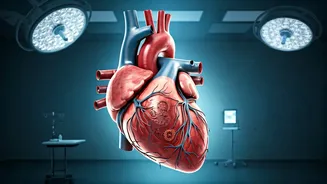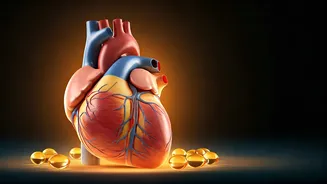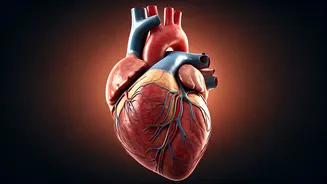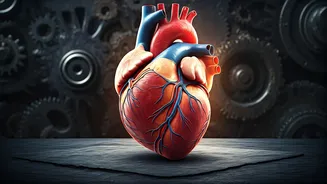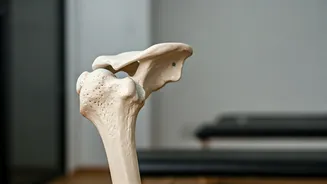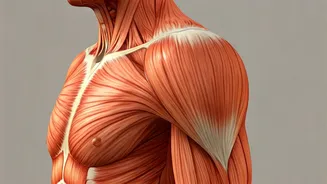The Initial Setback
Following a major heart attack, physical capabilities can be drastically limited. The individual featured in this story experienced severe limitations,
making even simple movements challenging. This initial state underscores the seriousness of the event and the significant hurdles faced in the recovery process. The emotional impact of such an event can also be considerable, leading to fear, anxiety, and a feeling of loss of control. The focus, during this critical period, is on immediate medical interventions to stabilize the patient, followed by the careful implementation of strategies to encourage healing and prevent further complications. This sets the stage for the essential role of cardiac rehabilitation to begin, guiding the individual through the phases of recovery and back to a fulfilling life. The story provides a stark contrast between the limitations faced immediately following the attack and the remarkable achievements possible with structured rehabilitation.
Understanding Rehab
Cardiac rehabilitation is a carefully designed program, encompassing exercise, education, and lifestyle modifications, all tailored to meet the specific needs of each patient recovering from a heart condition, such as a heart attack or heart surgery. This program generally involves supervised exercise sessions, where the individual’s progress is monitored closely by healthcare professionals. Education about heart-healthy living, including dietary adjustments, smoking cessation, and stress management, forms a key element of the process. The program seeks to enhance the individual's overall cardiovascular health, decreasing the risk of further cardiac events. The program offers a framework for patients to gradually increase their physical activity levels safely, with the support of a specialized team. It's a holistic approach to recovery, aimed at improving physical function, reducing risk factors, and improving quality of life, effectively equipping individuals with the knowledge and tools to manage their condition and lead a healthier lifestyle.
Exercise's Role
Regular exercise is a cornerstone of cardiac rehabilitation. The program starts with low-intensity exercises that gradually increase in intensity as the patient's fitness improves. These exercises are often performed under the supervision of specialists, with the heart rate and other vital signs being closely monitored. The exercises can include activities like walking, cycling, or using treadmills, and are customized to the individual's abilities and needs. The goals are to enhance cardiovascular fitness, improve strength and endurance, and boost overall well-being. Exercise helps to improve blood flow, reduce blood pressure, and control cholesterol levels, all of which are essential in preventing future heart problems. Regular physical activity also contributes to weight management, strengthens muscles, and decreases stress, creating an environment conducive to complete healing. The individual in the story showcased the remarkable gains possible with consistent exercise, highlighting the transformative power of a well-structured exercise regimen.
Diet and Lifestyle
Alongside exercise, lifestyle changes, especially dietary modifications, play an equally vital role in cardiac rehabilitation. Patients are educated on the advantages of a heart-healthy diet, which often includes reducing saturated and trans fats, lowering sodium intake, and incorporating more fruits, vegetables, and whole grains. This type of dietary approach helps control cholesterol levels, blood pressure, and blood sugar, thereby decreasing the risk of further cardiac events. The emphasis is on adopting sustainable lifestyle changes that support long-term heart health. Besides dietary changes, the programs also often include advice on smoking cessation, stress management techniques, and the significance of regular check-ups. These elements together form a comprehensive strategy for preventing future heart problems and improving overall wellness. Educating patients on these lifestyle adjustments is crucial to ensuring they can maintain their progress beyond the rehabilitation program's formal structure.
The Half-Marathon Milestone
The patient's accomplishment of running a half-marathon is a testament to the effectiveness of cardiac rehabilitation and the individual's commitment to recovery. This achievement showcases the dramatic improvement in physical capability and cardiovascular health that can be gained through the program. It provides evidence of the potential for individuals to not only recover from a major heart attack but also to push their physical limits and achieve significant goals. The event symbolizes a triumph over adversity and provides inspiration to others undergoing similar challenges. It serves as a reminder that with the proper support, hard work, and dedication, individuals can regain their health and fitness, returning to a fully active lifestyle. This story's narrative emphasizes that cardiac rehabilitation is not merely about physical recovery, but also about the mental and emotional boost that comes from achieving seemingly impossible goals.
Long-Term Benefits
The long-term advantages of cardiac rehabilitation extend far beyond immediate physical recovery. These benefits include a lowered risk of future cardiac events, improved overall quality of life, and a better ability to manage daily tasks. Patients who complete cardiac rehabilitation often report improvements in their mood, reduced anxiety and depression, and a heightened sense of well-being. The program provides the knowledge and skills necessary to manage their condition effectively. It encourages patients to take an active role in their own care and empowers them to make healthy lifestyle choices for life. The success in the story serves as an indicator of the lasting positive effects that cardiac rehabilitation can have on patients' health, well-being, and overall quality of life. The ultimate aim is to equip individuals with the tools they need to live long, healthy, and fulfilling lives.



